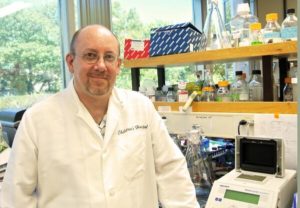In a paper recently published in the Proceedings of the National Academy of Sciences of the United States of America, Dr. Bruce Vallance (CH.I.L.D. Foundation Endowed Chair for Research in Pediatric Gastroenterology) and the rest of his research team found that sialic acid, a sugar derived from intestinal mucus, fuels pathogenic disease-causing bacteria. “This means that in the future, we can potentially target this sugar or how pathogens sense it, to prevent clinically important disease,” stated Dr. Vallance.

Besides causing infection and disease, pathogenic and similar dangerous bacteria can be found in the intestines of some patients who suffer from inflammatory diseases such as IBD. Such bacteria may start out being harmless, but as the inflammatory diseases progress, the bacteria can change over time and worsen disease.
According to Dr. Vallance, “You start off with IBD, your microbes change, they start digging their way into the cells lining your gut, causing more inflammation, and that may be one reason why IBD becomes chronic. Specific nutrients such as sialic acid or other sugars might be Achilles heels for them in terms of things you could target to remove dangerous bacteria from the intestine.”
Thus, targeting sialic acid could be a way to prevent life-threatening diarrheal diseases in children in developing countries, as well as help treat patients with IBD and other inflammatory diseases.
Dr. Vallance and his team are now examining the role other sugars in the gut might play in feeding pathogenic bacteria. Additionally, they are looking for resident good bacteria (probiotics) that could out-compete the dangerous bacteria, stealing the sugars away from them.
They also plan to explore potential interactions between resident and pathogenic bacteria. The latter can’t access the sugars on their own and thus, some of the typically harmless resident bacteria must serve as accomplices.
A better understanding of these interactions could provide new ways to block pathogenic disease-causing bacteria.
